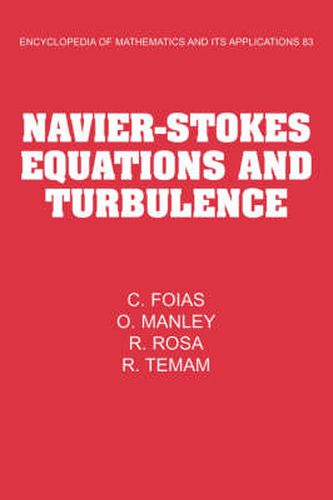Readings Newsletter
Become a Readings Member to make your shopping experience even easier.
Sign in or sign up for free!
You’re not far away from qualifying for FREE standard shipping within Australia
You’ve qualified for FREE standard shipping within Australia
The cart is loading…






This book aims to bridge the gap between practising mathematicians and the practitioners of turbulence theory. It presents the mathematical theory of turbulence to engineers and physicists, and the physical theory of turbulence to mathematicians. The book is the result of many years of research by the authors to analyze turbulence using Sobolev spaces and functional analysis. In this way the authors have recovered parts of the conventional theory of turbulence, deriving rigorously from the Navier-Stokes equations what had been arrived at earlier by phenomenological arguments. The mathematical technicalities are kept to a minimum within the book, enabling the language to be at a level understood by a broad audience. Each chapter is accompanied by appendices giving full details of the mathematical proofs and subtleties. This unique presentation should ensure a volume of interest to mathematicians, engineers, and physicists.
$9.00 standard shipping within Australia
FREE standard shipping within Australia for orders over $100.00
Express & International shipping calculated at checkout
This book aims to bridge the gap between practising mathematicians and the practitioners of turbulence theory. It presents the mathematical theory of turbulence to engineers and physicists, and the physical theory of turbulence to mathematicians. The book is the result of many years of research by the authors to analyze turbulence using Sobolev spaces and functional analysis. In this way the authors have recovered parts of the conventional theory of turbulence, deriving rigorously from the Navier-Stokes equations what had been arrived at earlier by phenomenological arguments. The mathematical technicalities are kept to a minimum within the book, enabling the language to be at a level understood by a broad audience. Each chapter is accompanied by appendices giving full details of the mathematical proofs and subtleties. This unique presentation should ensure a volume of interest to mathematicians, engineers, and physicists.